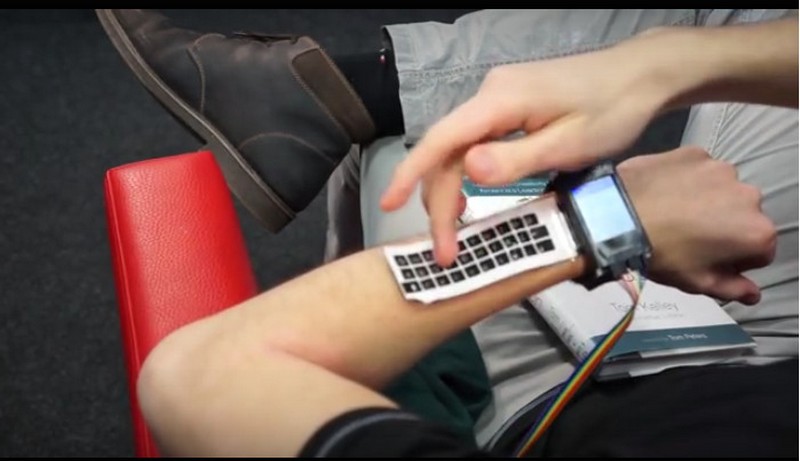iSkin Transforms Your Skin into a Touchpad to Control Wearable Devices
Various wearable devices have been flooding the consumer electronics market, from fitness bands to smart watches and even smart rings. The innovations thankfully are not stopping as new concepts for wearables are introduced. One of these new innovative wearables is the iSkin, a device made up of flexible sensors that transforms the human skin into a touch-based control surface. It can be used to control or interact with other wearable or mobile devices. Based on its earlier presentation
This device is comparable to what the Cicret bracelet does although different in approach. Cicret uses a projector to simulate a touch display on the skin. iSkin is itself the touch control surface. It is a completely physical interactive space that only employs touch sensors to detect the inputs from its user. As such, it consumes less power and arguably offers a more seamless user experience.
iSkin Features
iSkin is made of silicone rubber stickers with embedded pressure-sensitive sensors. It is worn by simply sticking it on the skin. Its main features can be summarized as follows:
Snug fit – Designed to be simply stuck on the skin, iSkin theoretically ensures a snug fit. This makes it comfortable to wear and use. It is also stretchable by up to 30% and bendable at a radius of 0.5 cm so the size of the wearer does not matter. As long as there’s skin it can stick on to, it should be usable for anyone. People who easily sweat or those who have thick body hair, however, may find it difficult keeping the iSkin patch in place. The creators of the device have not detailed the mechanisms of the device’s attachment to the skin. The questions on how long it can stick or whether or not it will stick on hairy skin are still unanswered.
Light and thin – No details on the actual weight of the iSkin have been released but it is expected to be light and thin. Wearing it should be hassle-free.
Intuitiveness – Because it acts like a physical touchpad, using the iSkin should be more intuitive. It may even be used in the darkness or without having to look at it. It can serve as a good way for controlling the volume of media players, answering or dropping a call, or waking up a mobile device and enabling voice-based interaction.
Customizability – Because of the nature of the materials used for iSkin, it can be easily customized into different shapes and sizes. Visual elements may also be added depending on the intended use.
Promising But Needs Improvement
The iSkin paper was granted the Best Paper Award at the recently held ACM CHI ‘15 in South Korea. There’s no question about how good the idea is. However as presented, it still has a lot of room for improvement. For one, the reflective silicone material makes it quite obvious when worn. It does not appear like it’s really part of the skin. Also, it is not a wireless device. It has to be attached to the device it is supposed to control or interact with. Nevertheless, it can be creatively implemented for easier and more comfortable use. For example, it can be added as a sliding tray beneath the face of a smartwatch so it can be pulled out when needed and slid back when it is no longer required.
iSkin does not come with its own power source and has no wireless radios to make it work wirelessly. With technologies such as the small skin-attached thermoelectric generators from KAIST and Wi-Fi backscatter, iSkin can be made wireless, more practical or easier to use, and capable of controlling more devices.
Wearable or Embeddable?
Okay, this is a petty nomenclature issue but to refresh your minds on the concepts of wearable and embeddable, the distinguishing factor is the permanency of the attachment of the device to the body. Embeddable devices are meant to be attached to the body permanently or semi-permanently. Wearables, on the other hand, are designed to be easy wear, remove, and wear again. Wearables are also bigger. Basically, iSkin is more of a wearable concept despite its size and the way it is worn.
Availability
As of now, there are no plans of further developing iSkin, let alone commercializing it. The developers of the device are just hoping that they have inspired others to pursue similar developments that can enhance human-computer interaction. Hopefully, mobile and wearable device manufacturers would consider the idea of using this technology. Enough of the useless race for higher display and camera resolutions. Users of wearable or mobile devices can enjoy more palpable benefits from innovations that incorporate the iSkin tech or other similar technologies.


